Well, I am back from Brisbane, and back at the working table, ready to work on my next book. I can’t say much about it yet, except that it’s a prequel to a series of best-selling fantasy novels, by Kylie Chan. It’s a Chinese-fantasy story, so I’m going to be in my element. So excited to be able to draw Chinese fantasy! I need to sort out the schedule with the publisher first, so you’ll hear more about it when that’s done and I start work.
As promised, this week I recommend an oldie but a goodie – Hikaru no Go. A manga about… the ancient Asian board game of Go. Drawn by one of my favourite artists (Takeshi Obata) this sits right in the middle of his work to date, so if you’ve been following Obata over his long career, this manga shows his biggest evolution in style. Obata has done other, better-known works since then (such as Death Note and Bakuman), but I assure you, Hikaru no Go is heads and shoulders above his other works.
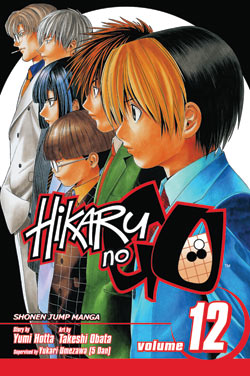 Hikaru no Go (Takeshi Obata)
Hikaru no Go (Takeshi Obata)
23 volumes
It’s impossible to mention Hikaru no Go without talking about its artist. Takeshi Obata is a manga artist I’ve followed since the beginning of his career, since I was 12. At the time, I picked up some random manga magazine, and read some goofy gag story about a meddling robotic grandfather (yeah, you read that right). This is unusual. Normally, I dislike gag stories, but this artist was… different. Special. He had good comic timing, a pleasant style of story-telling, and I really liked the characters. The art style resembled the artist who does Magical Taruruto-kun (a wacky gag manga with a style I dislike), but this artist’s style was inexplicably acceptable to me. I made a mental note of this guy, to see what else he has done. And then I totally forgot about it.
Unknown to me, that work was the debut work of Takeshi Obata, and was called Cyborg Jii-chan G. He had just started working for hit manga magazine Shounen Jump, and so talented was he that even some random 12 year-old knew he was the real deal. The editors at Shounen Jump clearly did too, and he was soon plucked from the ghetto of gag, and paired up with a number of writers in the hope that he can deliver a hit. It took him 9 years before he found it (with writer Yumi Hotta) – and that super-selling hit was Hikaru no Go.
Plot
Shindou Hikaru is an ordinary 6th grader scrabbling in his grandfather’s attic one day, when he comes across an old Go board. Hikaru doesn’t know (or care) about Go, but he noticed that this board had a blood-stain that no one else but him can see. The reason for that soon becomes clear – the Go board is haunted by a ghost named Sai, a highly-skilled Go player who committed suicide 1000 years ago. No one else can see Sai but Hikaru, and Sai has no desires other than to play Go, and now that he’s haunting Hikaru, badgers him non-stop to play Go on his behalf. With little choice in the matter, Hikaru gives in and agrees, and begins to frequent Go clubs so he can play on Sai’s behalf.
On his first trip, he meets a young Go prodigy named Touya Akira, who he develops a rivalry/friendship with. Eventually, Hikaru grows tired of being only Sai’s proxy, especially when he’s the only one in the room who can’t understand what’s happening on the Go board right infront of him. Immersed in a world full of people passionate about Go, Hikaru starts to take an interest in the game, and begins to play for himself. He’s terrible at first, but under Sai’s tutelage, comes to realise his own innate talent for the game, to the point where he decides to become a professional Go player. And so the story follows him, through his trials and tribulations, as he struggles to become a great Go player.
Why I Recommend this Story
Hikaru no Go means “Hikaru’s Go”, but is really the story of two people – Hikaru, and his arch-rival Touya Akira. Akira is a boy Hikaru’s age, a Go prodigy who appears in the first volume as Hikaru’s opponent. Sai plays him through Hikaru and soundly defeats him, something that has never happened to Akira before. Naturally, Akira thinks that Hikaru was the one who had so easily beaten him, and tries to initiate a re-match. This sets into motion something resembling a game of tag, fraught with obsession, strong character drama and suspense. For those who think Hikaru no Go is about the relationship between Hikaru and Sai, you probably missed the true heart of the story. While the relationship between Hikaru and Sai is characterised well, it pales in comparison to the passion Hikaru and Akira create in each other – for the game of Go.
Alright, you can read all kinds of homoerotic subtext in the above paragraph, but Go, like chess, is about a meeting of like-minds. You either ‘get’ the game or you don’t – and if you have a mind built for Go, you’re in a separate structural universe, speaking a different language. The people in this story converse with each other over a Go board, in ways that words can’t express. A Go game needs two people to play after all (preferably both living), and Hikaru and Akira’s “relationship” exists entirely within the world of Go. They have little in common outside their game, the same as most of the people who live in their world, so it’s a testament to the importance of Go in their lives, that these people form a community with a playing board at its centre. Go is the glue which binds them all together, and what this story excels at is showing what it’s like to live, work and breath in the narrow world of competitive Go-playing.
All this passion and single-minded devotion. Does this mean that it’s one of those dreaded… sports manga? People who read my recommendations section will probably know that I can’t stand sports manga – that special genre replete with cliches, grandiose speeches, and people silhouetted against the setting sun. Go is a game that is won by calculating the number of stones you take from your opponent, so the “matches” have a sporting quality to them, but like that great basketball manga Slamdunk, Hikaru no Go manages to gracefully sidestep all the pitfalls, and be about its characters. Yes, there is enough technical information in the manga about Go for you to grasp all the basic strategies and important rules. No, there’s not so much that you won’t understand it if you don’t care about Go. Like the very best sports manga, it’s a manga about people who happen to be into Go, as opposed to a manga about Go with people filling in as actors.
And it’s a story that is told in a subtle, realistic way, rather than bombastic and fantastical. Only Takeshi Obata can make people laying down Go stones seem like action-suspense, but Sai is the only supernatural element in the story. Like Genshiken, the characters may not seem realistic, but they have the feel of the real. They’re devoted to Go, but they also have to fill out tax applications, go to boring charity events, and deal with lost-in-translation issues with Go players from other countries. Top Go players sometimes go on a losing streak, have their confidence shaken, is plagued by bad luck, is hit by health issues, is followed around by journalists… all the sort of things you would expect with being a professional in an insular industry with its fans, hangers-on, schools, clubs, championships, governing bodies and celebrities. All of it drawn in great detail, probably based on real photographs.
All this activity is anchored by the game of “tag” between Hikaru and Akira, an undercurrent that runs through the entire series, and comes to a calm and satisfying conclusion that isn’t really a conclusion. But you wouldn’t expect there to be a conclusion in the traditional sense, would you? At the beginning of the story, both Hikaru and Akira are 12, and Akira mistakes Sai for Hikaru. A re-match ends up seeing Akira play Hikaru (without Sai’s help), and Akira is horrified and insulted at seeing how badly Hikaru played. Hikaru spends the rest of the series trying to raise his level up to Akira. The end of the series sees both Hikaru and Akira as 15 year-olds, with an equal level of skill, acknowledging each other as proper rivals, a dynamic that will probably last for the rest of their lives.
It’s just as well that the story ends here, at volume 23. It was popular, and could have easily continued, but it ended at the right place (a miracle, in manga terms). Everything that needs to be said about Hikaru and Akira, and the people that revolve around them, has been said, and said very well. Rarely has a story that is so encompassing about a world and its inhabitants been ended so perfectly.

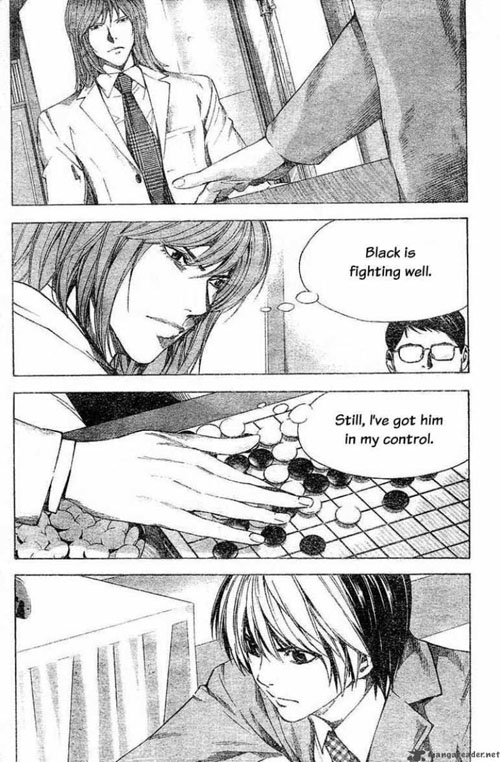
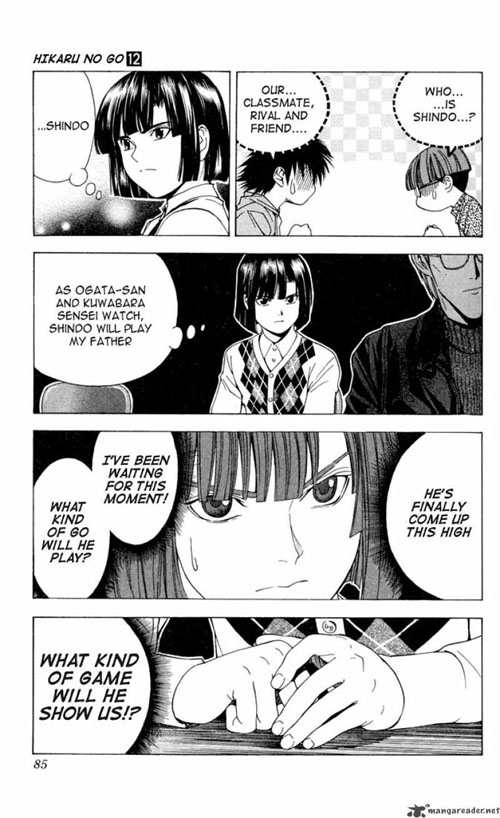
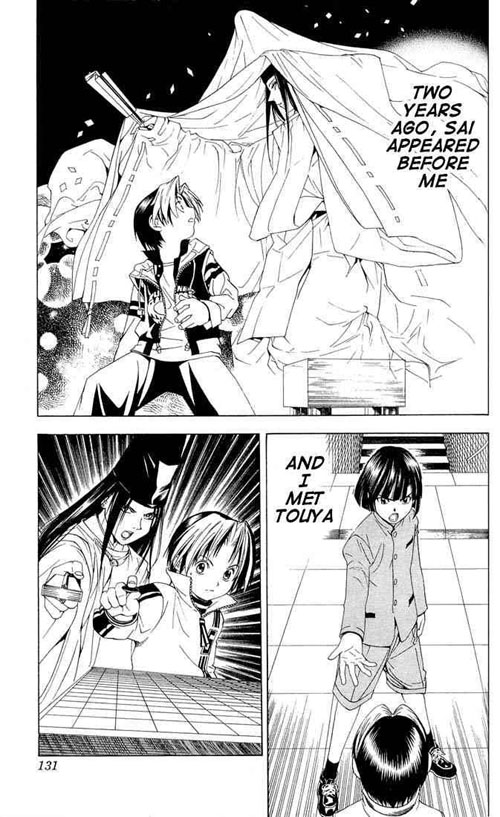
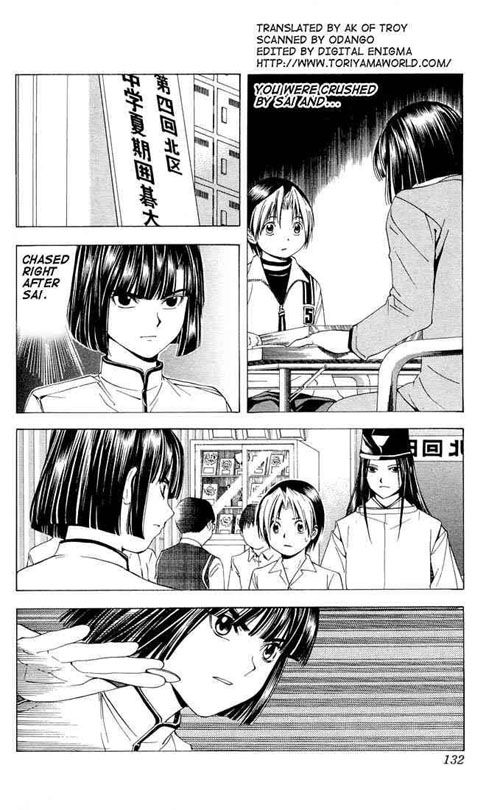
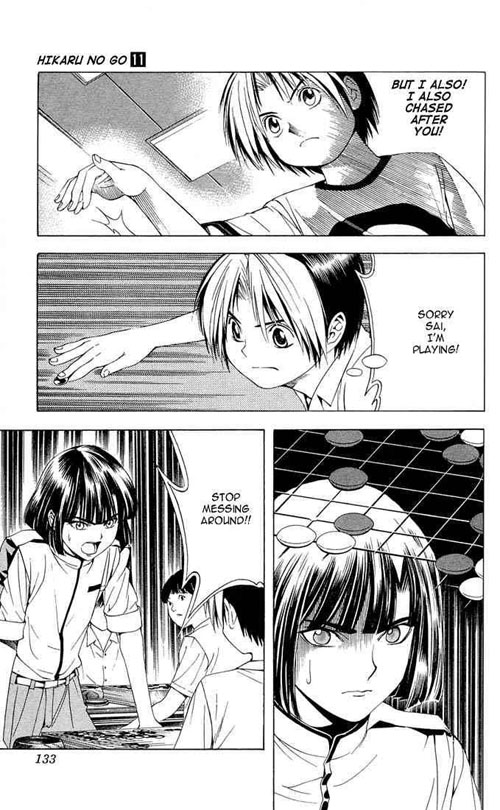
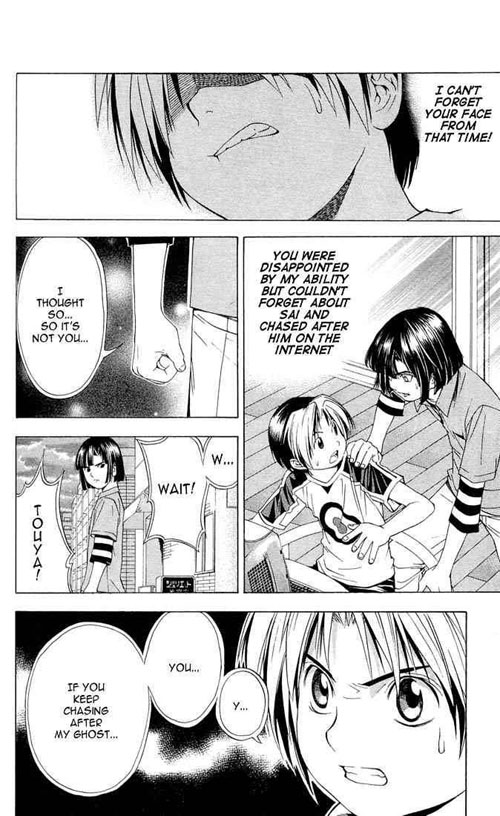
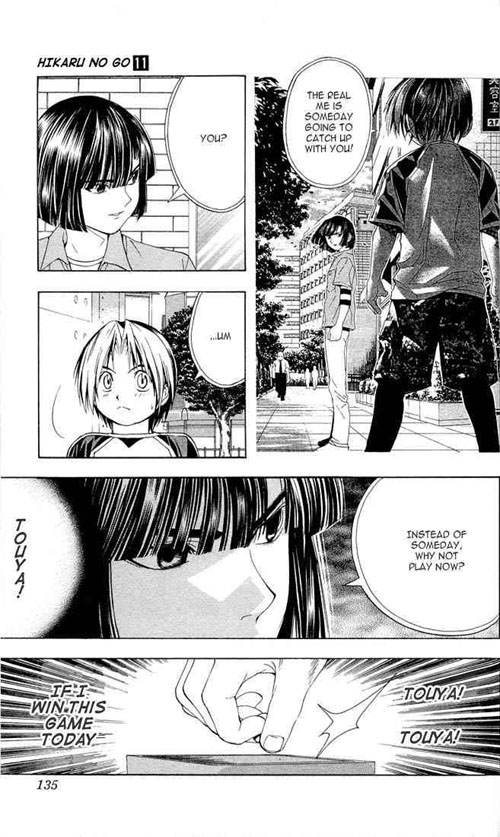
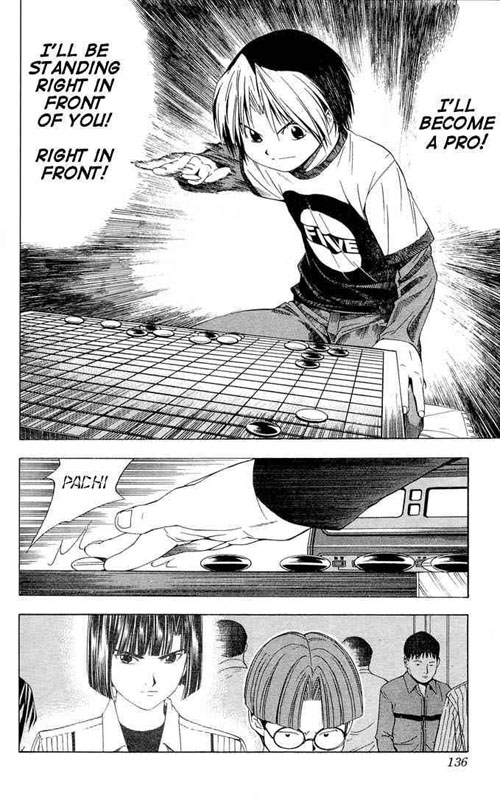
I really did enjoy reading Hikaru no Go a while back just as the heat started picking up between Akira and Hikaru if I remember correctly. Great recommendation!
As for sports manga, I really haven’t read that much outside of Eyeshield 21. I think Yusuke Murata’s gorgeous inks and dynamic compositions really helped me over that hurdle. I love that manga dearly even if I had no connection with football whatsoever.
Yes, Eyeshield 21 is superbly drawn. It certainly is unique, in terms of art. I haven’t read much of it, but I would like to read more of it.
Eyeshield 21 is really cool… also in it Anime version .. very interesting story also
I shall definitely read more of it then. 🙂
Try to watch it some time 😀
Nooo! The manga is better!!